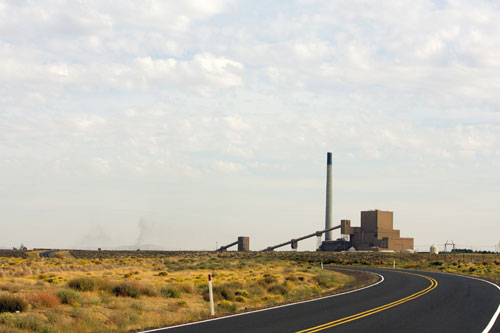 Coal generates just 22% of the electricity in the Pacific Northwest, but it is responsible for 87% of greenhouse gas emissions from the regional power grid. Given those numbers, it was only a matter of time before environmental groups took aim at Portland General Electric’s Boardman coal plant, the largest source of greenhouse gases in the state.
Coal generates just 22% of the electricity in the Pacific Northwest, but it is responsible for 87% of greenhouse gas emissions from the regional power grid. Given those numbers, it was only a matter of time before environmental groups took aim at Portland General Electric’s Boardman coal plant, the largest source of greenhouse gases in the state.
 |
PGE’s coal plant in Boardman |
Coal generates just 22% of the electricity in the Pacific Northwest, but it is responsible for 87% of greenhouse gas emissions from the regional power grid. Given those numbers, it was only a matter of time before environmental groups took aim at Portland General Electric’s Boardman coal plant, the largest source of greenhouse gases in the state.
The Oregon chapter of the Sierra Club is joining chapters in Washington, California and elsewhere to promote a Beyond Coal campaign that calls for stopping the construction of new coal plants and pulling the plug on old ones. Because Oregon has just one coal plant, Sierra Club’s local campaign targets just one utility: PGE, a public company that prides itself on its commitment to wind power, solar energy and efficiency.
Sierra Club and several other environmental groups are already suing PGE over alleged violations of the Clean Air Act at Boardman, which emits mercury and sulfur dioxide as well as carbon dioxide. Now they are turning up the volume on a public critique of PGE’s plan to invest $500 million into the Boardman plant. “It’s a real gamble to invest $500 million into 19th century technology so you can continue burning coal for another 30 years,” says the Sierrra Club’s Robin Everett.
From PGE’s perspective, it would be a much larger gamble to close the plant. Boardman is one of the utility’s cheapest power sources, cranking out electricity 24 hours a day at about one-half the market price. That’s why the utility has decided to make the investment in pollution control technology to reduce emissions of mercury and sulfur dioxide, even though the upgrade would not reduce greenhouse gas emissions. PGE has invested heavily in wind power but the intermittency of wind is more problematic than feared.
“Wind power will only deliver about a third of the time,” says Reuben Plantico, PGE’s environmental policy director. “You can’t build a portfolio on that. You need to have the reliable resources to back up your investments in renewables.”
PGE is also planning to build two new gas plants to back up future wind investments. But some observers, including Portland mayor Sam Adams, wonder whether the same goals could be met through conservation. In an Oct. 5 letter to PGE CEO Jim Piro, Adams wrote, “I strongly urge you to evaluate phasing out Boardman… by 2020 at the latest.”
The coal fires are bound to heat up further as PGE’s plan moves to the realm of the Oregon’s Public Utility Commission this winter.

